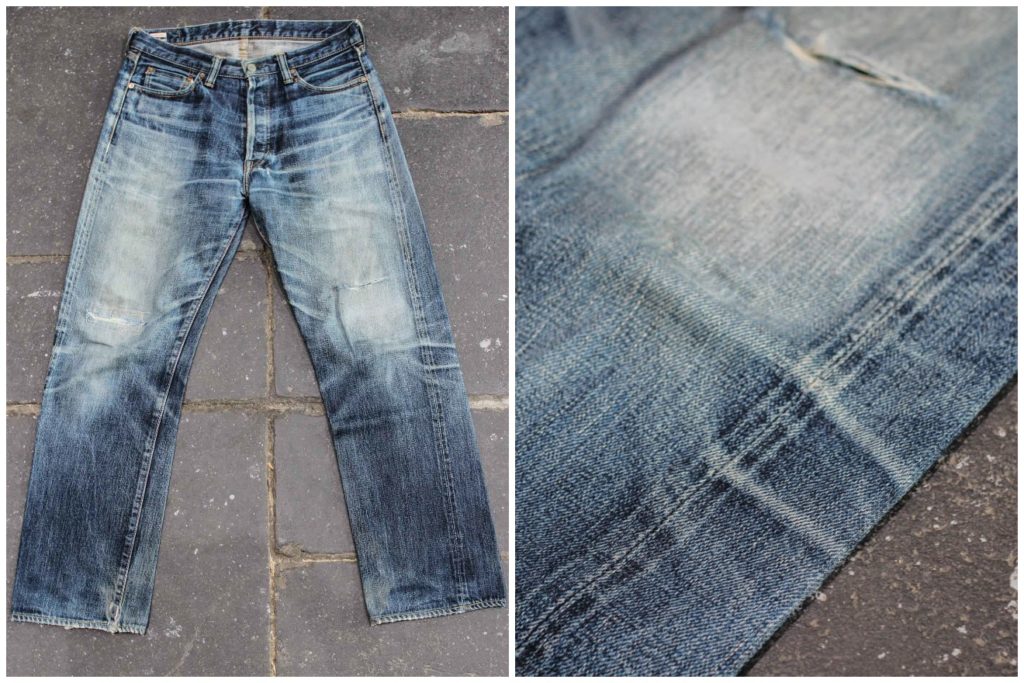Pre-skewing is a fabric finishing process that eliminates leg twist.
Without finishing processes such as sanforization and pre-skewing, denim is washed and shrinks, it naturally skews in the direction of the twill line. That means right hand twill skews to the right while left hand twill skews to the left.
This diagonal skew causes the infamous leg twist, which becomes progressively more noticeable when you wash your jeans as the angular relationship between the yarns relaxes.
It’s one of the characteristics of vintage jeans, and it’s become a prized one. But back in the days, it was seen as a drawback. (And many consumers still don’t want the legs of their jeans to twist.)
The history of pre-shewing
The leg twist was a big issue for jeans makers in the 1960s. Consumers were returning their twisting jeans. The fact that the increasingly popular flared jeans accentuated the problem didn’t help.
In the mid-1960s, Wrangler introduced their solution to the problem: broken-twill, a denim with a zigzag twill pattern known to neutralize skewing in weaves like herringbone.
Levi’s, on the other hand, didn’t want to abandon their popular 3×1 twill. In the early 1970s, they put Karin Hakanson on the task of finding a solution. She invented the pre-skewing fabric finish that corrects the natural skew, and patented it in 1976 with Levi’s as the assignee.

How pre-skewing is done
As mentioned above, denim naturally twists in the direction of the twill line. That means right-hand twill twists counterclockwise while left-hand twill twists clockwise.
The pre-skewing finish compensates for the tensions that cause the twist by deliberately skewing the denim in the opposite direction of the natural twist. That means right-hand twill twists to the right while left-hand twill twists to the left.
The weight, twill weave, yarn size, and yarn twist determine how much skewing is needing, but it’s usually between 4% and 10% for the denim in your jeans.
However, even though denim’s been skewed, you might still get leg twist on our raw denim jeans, only in the opposite direction of the twill line. That’s because the skewing process “over twists” the fabric in the opposite direction of the natural twist. As raw denim jeans haven’t been washed, you’ll still see that counter-skew, at least until they’re washed.
The way a fabric is cut and sewn can also result in a skew, especially with legs that taper, which effectively means all jeans that aren’t straight leg—in other words, slim fits, skinny fits and anti-fits.
While denim’s tendency to twist has been a dreaded feature for many years—and still is to the majority of consumers—denimheads actually want the legs of their jeans to twist.
